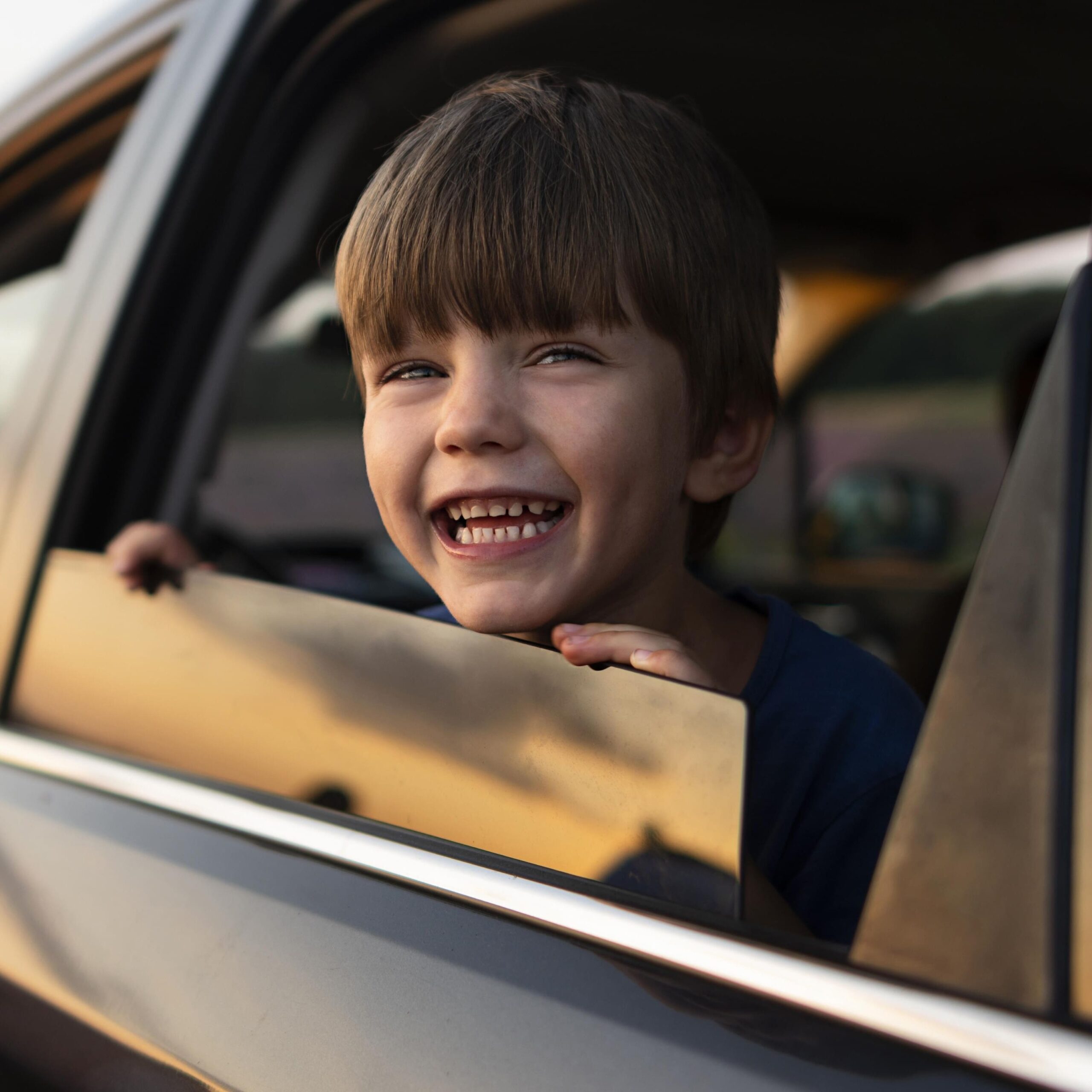Autism and Travel Sickness: Tips for Managing
Autism spectrum disorder, or ASD, is a developmental disability which is caused by differences in the brain.1
Autism may cause restricted or repetitive behaviour or interests, different ways of learning, difficulty paying attention or moving.1
According to research, it’s possible children and adults with autism may be more susceptible to travel sickness, also known as motion sickness.2/3 That can mean that travel can be yet another challenge for people with autism and their family.
Autism spectrum disorder, or ASD, is a developmental disability which is caused by differences in the brain.1 It can mean people with autism have problems communicating socially and interacting.1
While people without autism may display some of the symptoms, those with ASD can find life extra challenging with these typical characteristics.1
Generally, children aged two to 12 years are known to be particularly susceptible to travel sickness4 but heightened sensory sensitivity in some youngsters with autism can cause it or make it worse, increasing the chances of anxiety and nausea.2
In this blog we’ll take a little journey to provide information on why it’s believed to be linked, as well as tips and advice on how to manage those trips should it occur.
After all, we’re here to help you to travel as happily as possible and live life to the full no matter what potential roadblocks seem to lie ahead…
The link between autism and travel sickness
The link between autism and increased travel sickness susceptibility is thought to be connected to the vestibular system5, a sense organ which helps the body to regulate balance and movement6.
Between the eyes and ears, it sends messages to the brain about where we are and the movement we’re experiencing.
Travel sickness is caused by a sensory mismatch or conflict of information – essentially the inner ears sense movement but the eyes don’t.7
The vestibular system is one of the most sensitive and important sense organs in the body6 and many individuals with autism will have some degree of vestibular dysfunction.
So, coupled with any additional sensory processing issues, this can make people with autism more susceptible to travel sickness than those without ASD.
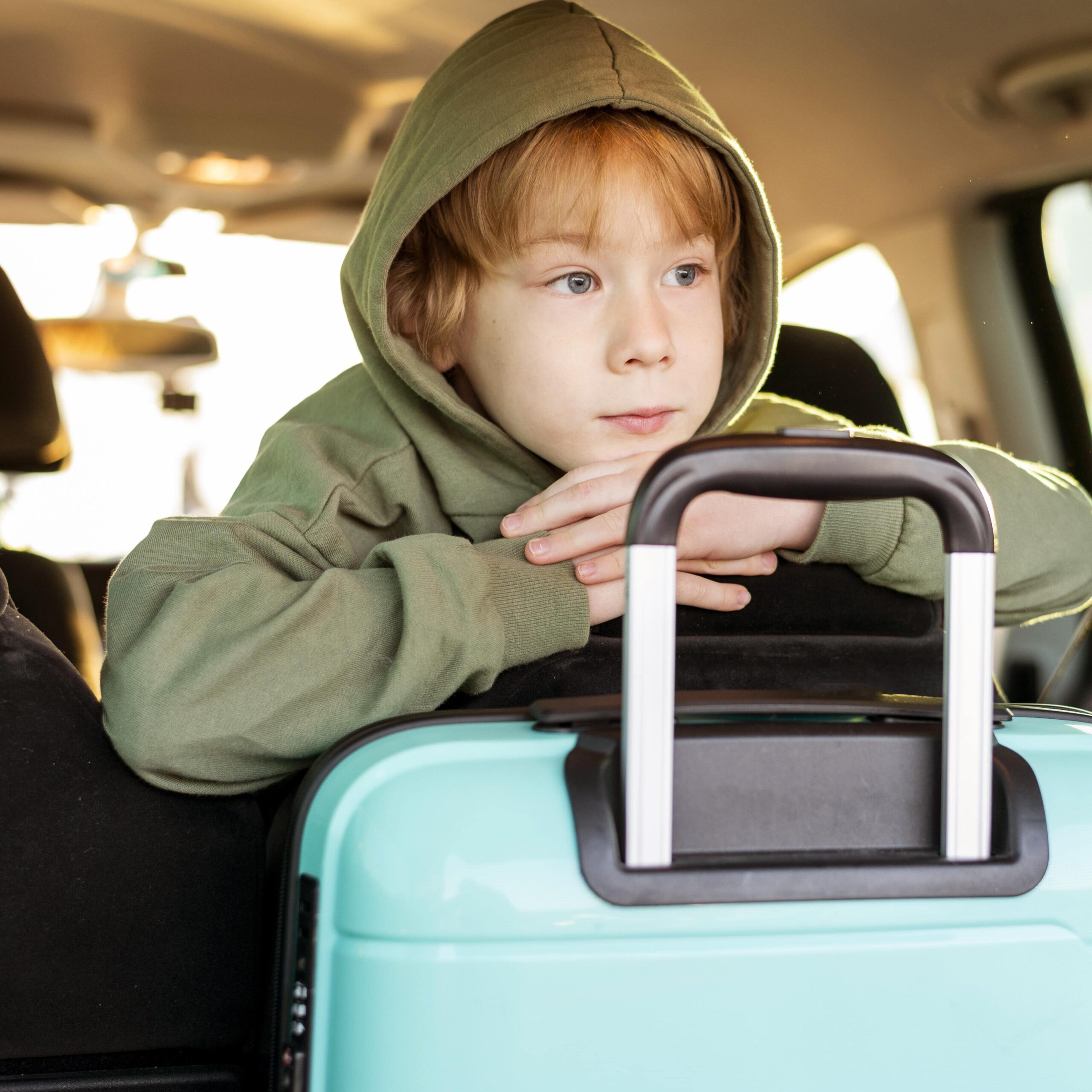

Dealing with travel sickness
Travel sickness is common, particularly in children.4 Fortunately, we tend to grow out of it in our early teens but it can stay with us into adulthood.4 If you’ve ever suffered, you’ll probably remember it all too well!
Feeling sick, being sick, feeling weak, cold and going pale – some of the most commonly experienced symptoms which can be unpleasant and distressing for anyone.8 But for children and adults with ASD, it can be particularly stressful and that in turn can be stressful and upsetting for those around them.
If you’re travelling by car, it’s easier to stop when convenient but the issue of travel sickness can be trickier to deal with on a boat, plane or train. We understand long journeys don’t suit everyone but the destination is what makes them worthwhile.
When it comes to preventing or easing travel sickness symptoms in youngsters – or adults – with autism, it’s as much about comfort and distraction as it is about being well prepared with things like wipes, water, healthy snacks, a change of clothes and cleaning aids.9
Tips for managing travel sickness & autism
Here are a few tips which will help to go a long way to making car travel less stressful and hopefully a lot happier.9 And most of them can be adapted for travelling on other types of transport too!
- If your child is good at travelling for say 30 or 50 minutes – known as the ‘wellness window’ – try to plan journey breaks to coincide with the time they’re likely to start feeling ill. You can stop off for toilet breaks or a short walk, helping to ease symptoms and reduce the chances of any upset.
- What we wear can make a big difference – who hasn’t got a favourite pair of joggers or a slouchy sweat top they love to lounge in? Whatever they favour clothes wise, yes even pyjamas, if it makes them feel more comfortable why not wear it to travel in?
- Reading a book, playing computer games or looking down to watch a film is generally not advised for travel sickness sufferers. If a favourite movie or TV programme would make them feel better, why not download it onto a tablet and secure it to the top of the front seat. That way they’re looking straight ahead and not down.
- Travelling can be a sensory overload for some people with autism, especially children. Soothing music, a podcast, singing or playing guessing games as a family are good distractions. If your passenger is sensitive to lights and you’re driving at night you could try blocking the side windows in the back.
Planning ahead
Yes, there’s plenty you can do before you even step foot outside the door.
This will help to give you peace of mind and help you to feel more in control should travel sickness strike.
A few golden rules to bear in mind before you even start your journey include8:
- Avoid eating a heavy meal before travelling opting for a light snack with carbs such as cereals around an hour before you set off.
- Plan breaks into your car journey for refreshments such as water, fresh air and a short stroll.
- Keeping motion to a minimum can help so if you’re booking a flight or a cruise try to book a seat over the wing of a plane or a cabin in the middle of the boat. Looking at the horizon can help to relieve symptoms so if passengers are old enough sitting in the front of the car is probably better.
- Strong smells such as petrol, perfume and diesel fumes can make sufferers feel worse so try to avoid them. And be careful what you put in those sandwiches!
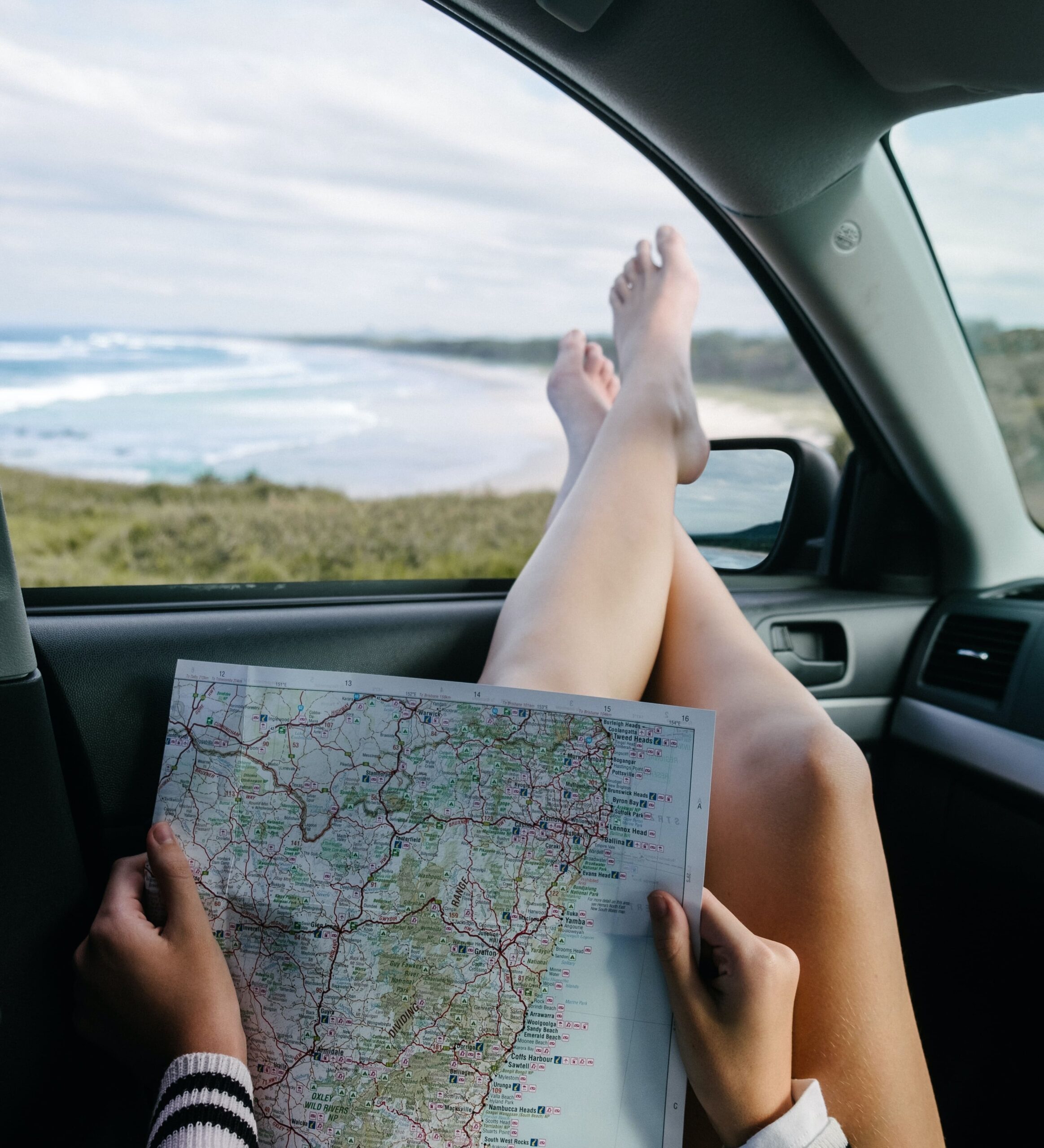
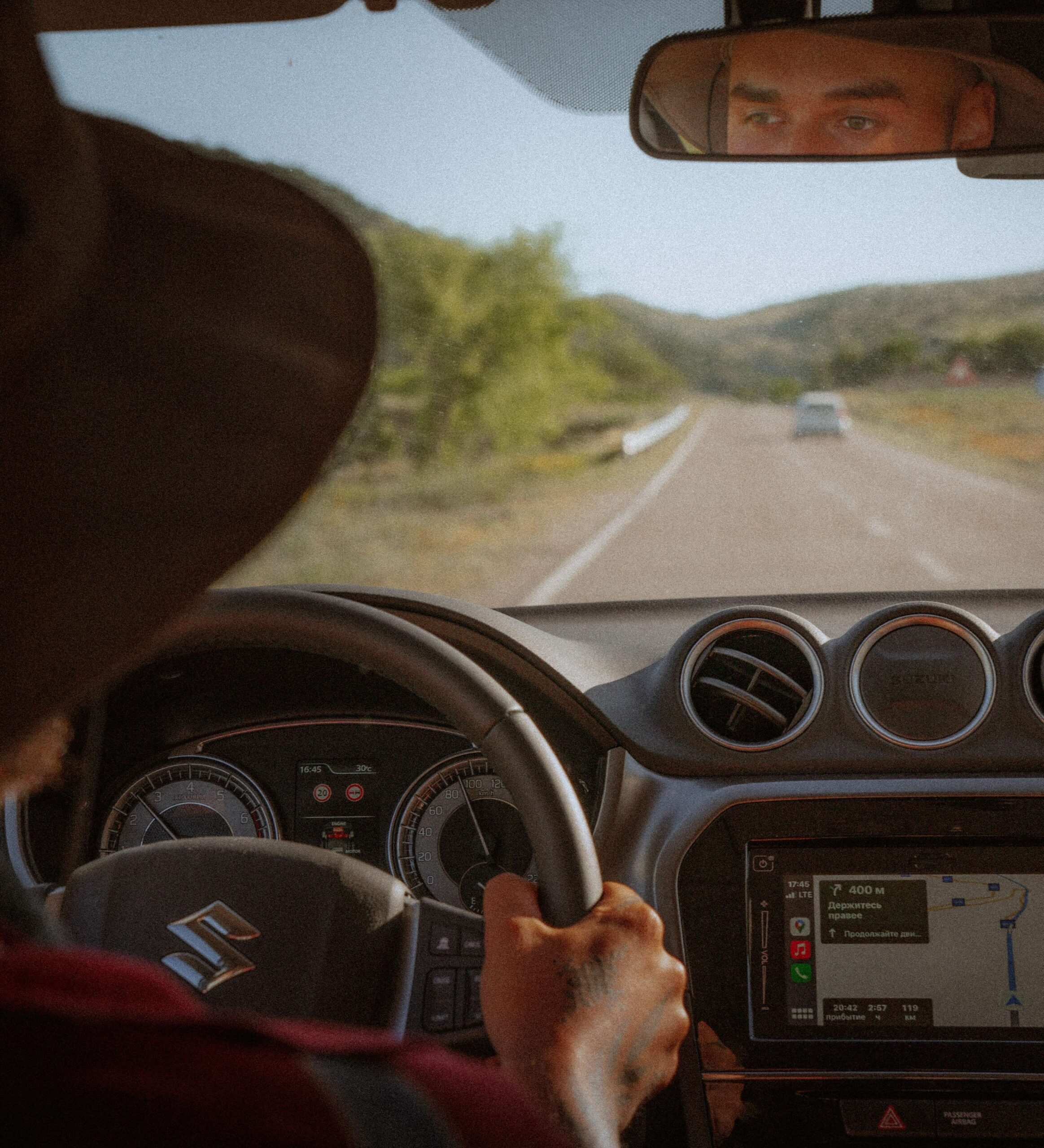
Managing nausea during travel
The nausea usually felt by travel sickness sufferers is one of the most unpleasant and commonly experienced side effects.
Here are a few ways to relieve it10:
- Sit in the front of a car or in the middle of a boat to reduce the feelings of motion
- Look at the horizon or a fixed point straight ahead of you
- Breathe in fresh air if you can, open a car window or if you’re sailing stay on deck
- Close your eyes and breathe slowly while focusing on your breathing
- Talking, listening to music or singing songs are good distraction techniques for children
- Break up long journeys with stops for fresh air, a drink of water or a walk
If you’ve tried all the self-help methods to relieve or prevent travel sickness, don’t worry. Your pharmacist will be able to advise and recommend the best remedy and treatment for your child.10
These include10:
- Patches – for adults and children over 10.
- Acupressure bands – these don’t work for everyone.
- Tablets – dissolvable tablets are available for children.
Children’s travel sickness tablets & medication
Travel sickness tablets such as Kwells Kids 150 microgram tablets are used for the fast and effective prevention and control of travel sickness.11
Because Kwells tablets melt in the mouth, absorption into the bloodstream is very rapid and they can be taken up to 20–30 minutes before travelling or at the onset of sickness.11
The active substance in Kwells tablets is hyoscine hydrobromide which temporarily reduces the effect of movement on the balance organs of the inner ear and the nerves responsible for nausea.11
Kwells Kids are available without a prescription from pharmacies and supermarkets but you should always read the Patient Information Leaflet included in the product carefully and your pharmacist if you need more information or advice.11
Before giving Kwells Kids tablets to your child you should see your doctor if they suffer from seizures or fits and a range of other conditions listed in the Patient Information Leaflet.11
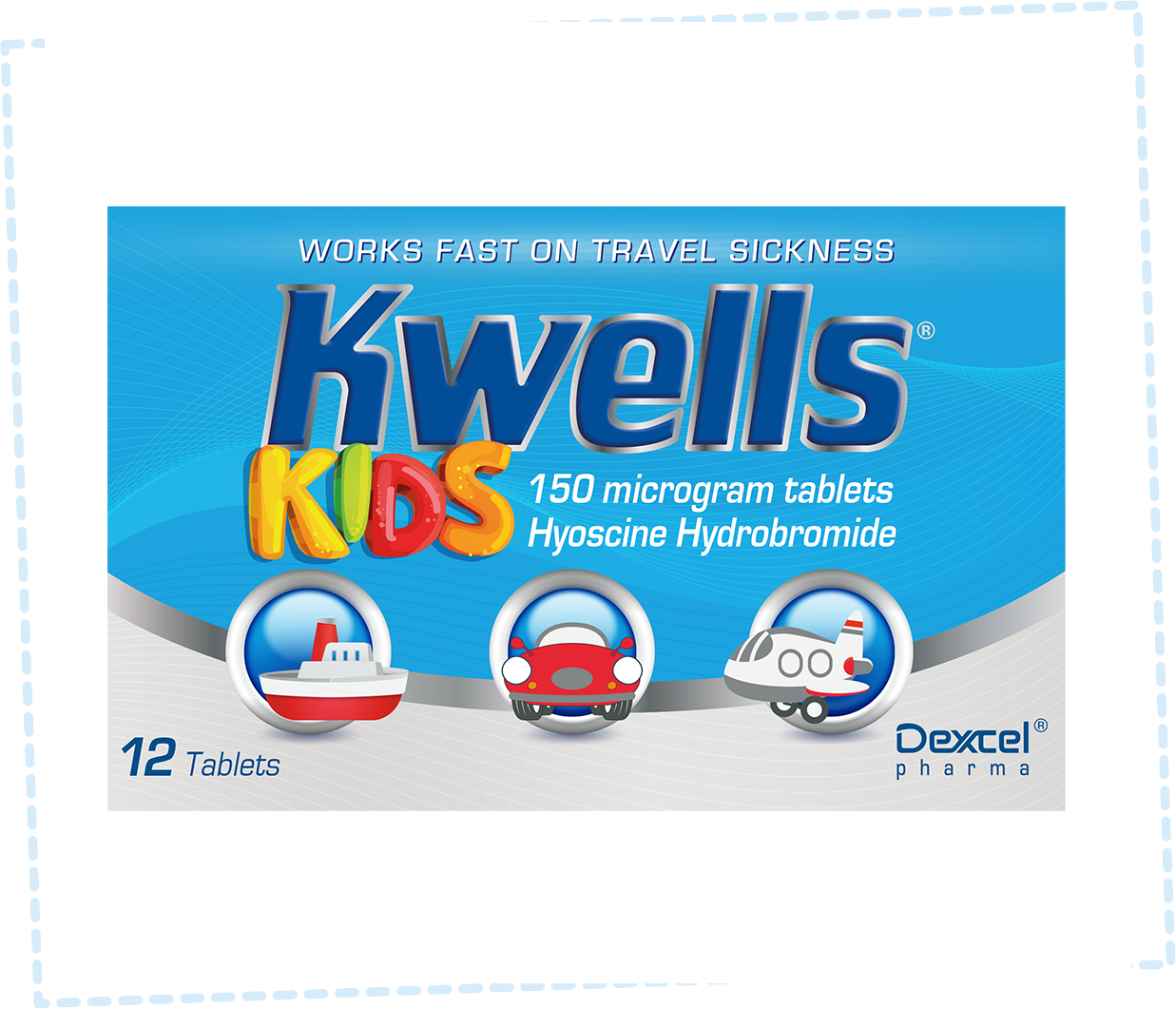
Helping you to travel happy
If you have a child who is autistic you may be understandably more anxious ahead of journeys. It can be an added challenge to everyday life. The good news is most children grow out of it and there is much hope on the horizon for less stressful, travel sickness free trips.
For those of us who don’t leave travel sickness behind, we learn how to manage it the best we can, relying on self-help methods mentioned above and the treatments available, allowing us to make the most of travelling to see friends and family, explore new places and experience new adventures.
Try not to get too stressed ahead of a journey, worrying about what might go wrong. Being as prepared as possible will help to ease your concerns and give you a strategy for dealing with all possible eventualities. Instead try to focus on your holiday or day trip and the lovely memories you’ll make. It will be well worth it in the end!
Kwells 300 microgram tablets. For the prevention of travel sickness, suitable for adults and children aged 10+. Contains Hyoscine Hydrobromide 300 microgram. Kwells Kids 150 microgram tablets. For the prevention of travel sickness, suitable for children aged 4+. Contains Hyoscine Hydrobromide 150 microgram. Always read the label
References
- https://www.cdc.gov/autism/index.html
- https://psychcentral.com/autism/autism-and-travel-sickness#autism-and-car-sickness
- https://www.ncbi.nlm.nih.gov/pmc/articles/PMC8513787/
- Fasttrack: Managing Symptoms in the Pharmacy – Alan Nathan
- https://www.autismtogether.co.uk/vestibular-sense-and-the-autistic-spectrum/
- https://cchp.nhs.uk/sites/default/files/The%20Vestibular%20System_handout_V1.pdf
- https://www.physio.co.uk/treatments/physiotherapy/vestibular-rehabilitation.php#:~:text=Your%20vestibular%20system%20is%20responsible,sensation%20of%20movement%20and%20imbalance
- https://patient.info/travel-and-vaccinations/health-advice-for-travel-abroad/motion-travel-sickness
- https://worldstemcellsclinic.com/blog/traveling-with-autism-tips-to-combat-motion-sickness/
- https://www.nhs.uk/conditions/motion-sickness/
- https://www.medicines.org.uk/emc/files/pil.11745.pdf

